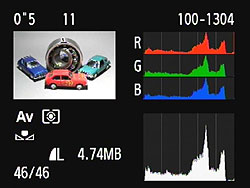What's up everyone,
In my quest to better myself as a photographer I have come to an impasse. I've been under the assumption that when setting up my shot captured in RAW I should be taking it a little under exposed so I can bring out all the details in post without the highlights be blown out. But when I do this and goes to raise the exposure in lightroom, the image gets really blown out and loses all contrast and just becomes a dull almost grayish color across the whole image. What exactly am I doing wrong?
Show us. Create a free Dropbox account and post one of the raw files there along with your processed version.
You're first assumption is a bad one. Do not deliberately underexpose raw files. With a raw file you should either 1. Expose such that the camera software generates a good-exposure JPEG or, if you're more serious, 2. Expose the sensor to place the diffuse highlights at the sensor threshold.
Joe
Alright, I'll have to do this tomorrow morning when I get off duty. Didn't expect such quick responses! But you're saying that when I take the picture I should make sure the highlights are right at the threshold?
Edit: I could take a couple example shots on my phone to show what I'm getting
Different people chose different approaches. Here's a rule: Image quality increases with increasing exposure and the inverses is likewise correct. Second rule: Clipped highlights are forever. If your exposure clips all four sensor channels
View attachment 146683 -- there's no LR slider that's going to fix that. So exposing the sensor in your camera is like a game of chicken. It's the version of the game where you floor the gas peddle and drive straight for the edge of a cliff. The winner slams on the breaks and stops closest to the cliff edge without going over, proves his manhood, and takes the cheerleader to the prom. Going over the cliff edge is really bad
View attachment 146683, you get a memorial wreath and flowers at the prom. So a lot of folks (including your camera manufacturer) will tend to make a conservative choice about when to slam on the breaks. The photo may not be quite as good as it could be but accepting a little quality loss is a lot better than driving off the cliff
View attachment 146683. If you stop too far from the cliff edge you go to the prom without a date and stand outside with the other losers smoking and trying to look cooler than the loser next to you.
Back to the first rule: Momentarily setting aside the possibility of
View attachment 146683, it's a clear and simple rule -- you're going to get the best image, best color, lowest noise, cleanest shadow detail, all good stuff from more sensor exposure. A clear case of more is better. The next question then is how much does it matter. Is there a big difference. And the answer to that is it depends. It's much less of a difference now that it was a few years ago. Our cameras have gotten a whole lot better. Do you have a modern APS or larger sensor camera? Then you can afford to slam on the breaks real early and stay far away from that cliff edge -- you'll have a very hard time seeing the difference. Do you have a smaller sensor camera or maybe an older model? Try not to underexpose very much, just remember a minor quality compromise is better than
View attachment 146683.
I noted above that your camera manufacturer may tend toward a little lead-footed breaking as they approach the cliff edge. You noted you save raw files so it's a minor issue: the camera designers are well aware of what happens when you go over the cliff so they typically engineer a little safety factor into the camera's exposure system and JPEG engine. That leads to this general rule: If you have a well exposed camera JPEG odds are the raw file is conservatively exposed and could have benefited from some additional exposure usually in the range of 1/2 to a full stop.
Here's some reading:
class notes. Pay special attention to the section in Chapter IV titled Option 1. It addresses this issue of sensor exposure.
Joe
P.S. Let's see some of your raw files.





![[No title]](/data/xfmg/thumbnail/32/32981-27e3d29bfa5b1638f18299ec111c7b87.jpg?1734162931)









